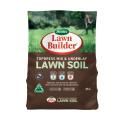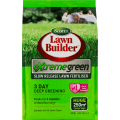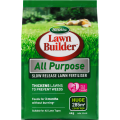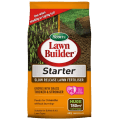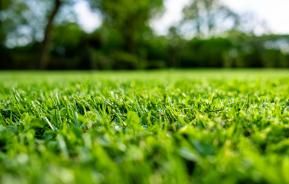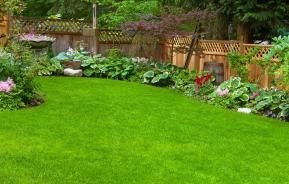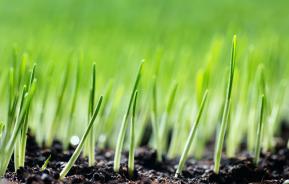Need advice on how to fix a patchy and thinning lawn? We can help you identify your lawn problems.
One of the biggest worries for a lawn lover is a patchy and thinning lawn, a problem that can happen anywhere a lawn is grown.
Thankfully the symptoms are easy enough to remedy - all the steps you need appear below. It’s also worth considering some of the main causes of these problems so you can make sure they are less likely to recur.
Common lawn problems and simple solutions
Here are some of the classic symptoms, their causes and some suggestions on fixing the problem, and not just a temporary fix.
SYMPTOM: Bare patches, often at the edge of paving, decks or in front of the letterbox or clothes line
- CAUSE: These problems are caused by excess wear from high foot traffic and general use.
- REPAIR: You can easily repair the area with a patching product or lawn seed but long term you would be better off adding some stepping stones or a small pathway through the lawn.
SYMPTOM: Bare patch or thin areas around edge of garden beds and fence lines
- CAUSE: Overshadowing by surrounding plants resulting in lack of direct sun on the lawn.
- REPAIR: There are a few approaches that can be used on their own or in combination.
- Appropriately prune or thin the surrounding plants to reduce shade.
- Repair and replant with a more shade tolerant lawn variety.
- If pruning isn’t viable and the shade is too deep, consider a landscape solution. Convert the area to a garden, plant a shade-loving groundcover or just mulch it.
SYMPTOM: Bare patches at random locations in the lawn. Often scorched in the centre with bright green grass around the edges
- CAUSE: Most probably dog urine!
- REPAIR: Water the area heavily as soon as you notice the damage or as soon as they wee. Longer term you may want to keep the dog's off the lawn, look into PH balancing food additives and of course you can patch with lawn seed.
SYMPTOM: Thin all over
- CAUSE: If you've eliminated too much shade as a cause then the damage is likely a combination of seasonal extremes and inadequate feeding and watering.
- REPAIR: The best solution for the long term is to adopt a regular lawn care programme of regularly feeding and watering your lawn.
How to repair your patchy lawn
You will need:
- Spade or garden fork
- Scotts Lawn Builder Lawn Soil
- Scotts Lawn Builder Lawn Seed
Step 1
With the spade or fork, remove any dead grass and other unwanted material and break up the soil in the bare area.
Step 2
Add Scotts Lawn Builder Lawn Soil and blend through the existing soil. Bring the area to a level that’s slightly higher than the surrounding soil, removing excess from high spots if required. This extra height allows for natural settling of soil.
Step 3
Following instructions on pack, spread lawn seed evenly over the area. Water gently but thoroughly and keep moist not wet until well established. Keep people and pets off the area until the grass is well established.
How to repair your thin lawn
You will need:
- Lawn mower
- Steel spring-tined lawn rake
- Scotts Lawn Builder Lawn Seed
Step 1
Mow lawn to usual the height, then vigorously rake over the entire lawn area to remove any dead or unwanted grass, leaves and other debris. This will also serve to scratch up the soil a little, making it more receptive for sowing seed.
Step 2
Spread seed by hand over the thinning areas, noting any instructions on the label about how thick to sow it.
Step 3
Water in well and keep moist but not wet until well established. Keep pets and people off seeded areas until grass is well established.




